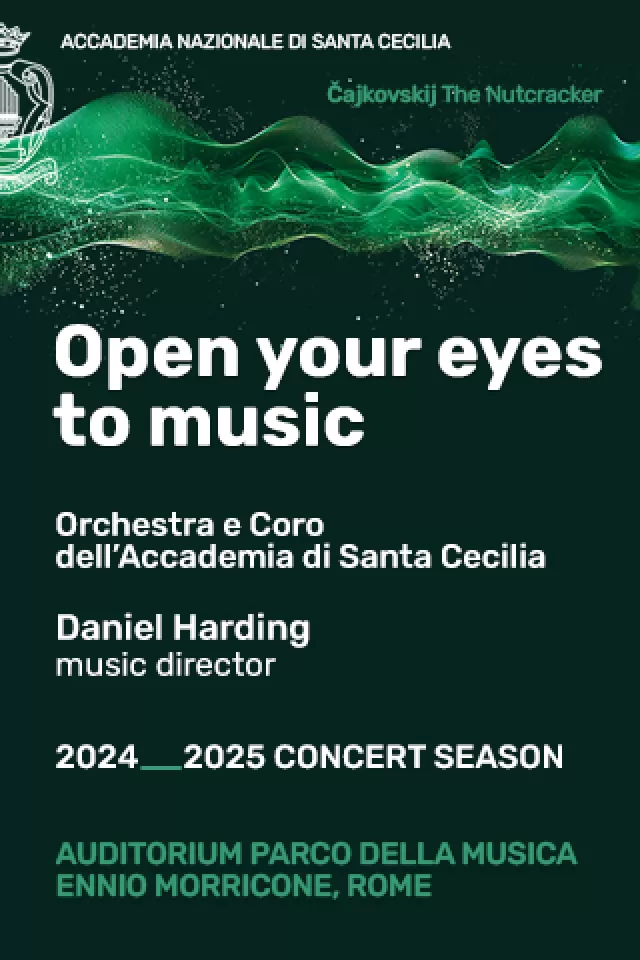When the highest notes arise from the deepest sighs: the tragic story of Italy's castrate singers.
“Alessandro Moreschi Angelo di Roma, Cantore nella Capella Sistina 1858-1922” reads a tomb on the upper level of Rome’s Verano cemetery. A black-and-white photograph shows a man with an impressively large chest and unusually thick hair.
Moreschi was the last of the cantori evirati, Italian castrate singers. He joined the Sistine Chapel choir in 1883. However in 1902 Lorenzo Perosi, appointed to head the choir by Leo XIII in 1898, convinced the pope not to hire any more castrati. “Those singers who, let us say, are 'imperfect' on a physical plane although complete as singers, are totally excluded from the Sistine Chapel,” a local newspaper reported, and concluded: “This is a victory for Maestro Perosi.”
At the same time Perosi, who referred to castrate singers as “abnormal men”, finally managed to force his predecessor, the castrate singer, Domenico Mustafà, into retirement, so ending a tradition of more than three centuries.
Illegal operation
Even after Pope Leo XIII had forbidden the practice, the church kept employing castrate singers. With the operation officially illegal, common excuses for the boy's unmanned state ranged from his being a natural-born eunuch (or "congenital bilateral anorchia"), to a riding accident, an animal bite or castration for the cure of hernia. When German singing teacher Franz Haböck interviewed the last castrate singers, every single one claimed to have been bitten by an animal at young age. Both Mustafa and Sebastianelli, for example, were bitten by a pig. Another one claimed to be bitten by a wild swan.
In 1903 the newly-elected pope, Pius X, issued his motu proprio: boys were to replace castrati in church choirs.
Castrate singers evoke both fascination and speculation. But their story is limited to their successes on stage. Little is known about their private lives. And nothing at all about those who failed as singers.
Origins
As early as 1550, the Sistine Chapel counted at least one castrate singer, a Spaniard. Since Sixtus V, the Roman Catholic Church followed St Paul, who wrote that women should “remain silent in churches.” At the same time, however, the church needed high voices to sing polyphonic music in its basilicas, cathedrals and churches. The Vatican employed falsetti, male singers who reached high notes using a special technique and who were usually from Spain. Because the castrati had a voice that was higher, more voluminous and flexible, they gradually replaced the falsetti. Italy started to produce its own castrate singers.
Taboo
The surgical operation usually took place when a boy was about eight years old. It was a venture: many boys died, either during the operation, because of too much pressure on their carotid artery or a lethal dose of opium, or afterwards, because of an infection. Despite being a widespread practice, Italians kept a taboo on its who and where. When musicologist Charles Bruney asked for information from the locals, they sent him from pillar to post. All he discovered was that the practitioners were called “norcini”, after Norcia, the Umbrian town famous for its pig slaughterers although there were well-known surgeons in Florence and Bologna as well.
Originally, castrates performed only in churches, singing religious music. The Church offered a package to boys who had a lovely voice: castration “to the honour of God”, as Clement VIII proclaimed, in exchange for lodging, food, clothing and an education that would allow them to make a living.
Fame and money
Early in the 17th century, Peri’s Euridice and Monteverdi’s L’Orfeo, the world’s first operas, featured parts for castrati. Soon, the Baroque opera took Europe by storm and new theatres opened all over the continent. When Innocent XI forbade women to perform in the theatre and opera Europe’s stages provided an opportunity for the castrate singers. By 1730 Italy was producing 4,000 castrates per year. Families offered their sons in the hope of fame and money.
Changing musical tastes
However, at the beginning of the 19th century the success of the castrate singers faded. They had become relics. The Baroque opera and its castrate singers with their wigs and lead powdering symbolised the ancien régime. Practices like castration were not compatible with the ideas of Enlightenment. And as the musical taste changed, with a preference for male voices, and women reappeared on stage, the theatres no longer offered a role for them. Composers no longer wrote castrato parts. The castrato singers had to recede to their origins: religious church music. Finally, the Vatican’s Sistine Chapel became their last stronghold, but by 1898 it counted only six castrato singers. Between 1902 and 1904, Moreschi recorded a series of songs in the Vatican: he is the only Italian castrato singer whose solo voice has been recorded.
Training
Moreschi received his vocal training at Rome’s S. Salvatore at the Lauro. Castrato singers underwent a long and rigid training. Naples’ conservatories – reputedly the world’s best – developed out of orphanages. Almost a fifth of the pupils of the S. Onofrio conservatory were castrates. Yet life inside the institution must have been hard. Despite the conservatory being a boy's only home and provider of a future, archives reveal that almost every pupil who ran away (“si n’è fuggito”) was a castrate.
Hormones
As castrato boys grew up, their disrupted hormone levels could turn them into grotesque creatures, freaks even. In his Letters from Italy (1739), historian Charles de Brosses observed: “Most become big and fat like capons, their mouths, their rumps, arms, breasts and neck rounded and chubby like women.” On top of this, they suffered from osteoporosis and cardiovascular problems.
After his retirement, Moreschi, “l’angelo di Roma”, lived anonymously in an apartment near the Vatican. He married a woman, but left her soon after for a man. As admired as the castrates were on stage, they were despised off stage. They received the most vulgar nicknames.
An opera dramaturg investigated the subject for 20 years and came across only 100 singers who had been documented. Remarkably, there are no accounts of castrate singers who failed stardom; it is almost as though they tried to fade into oblivion. Even Farinelli (1705-1782), the most popular castrato singer ever, refused a biography and described himself as a “despicable creature”. The only castrate who wrote an autobiography was Filippo Balatri, but Balatri was a successful singer as well as something of a cultural ambassador, ending his days as a Cistertian monk.
Condemned to sing
The surgical intervention changed a boy’s life irrevocably. It condemned him to one single occupation: singing. Yet many boys failed. And those who failed still had to make a living: boys who were not particularly gifted could join the choir of a small church while those who were apt in music could become a teacher. Others became priests. Boys who ran away from the conservatory, however, had no option but to beg or sing on the streets for money. Or worse.
Prostitution
On stage, castrates interpreted both male and female roles, appealing to both sexes. Casanova fancied one. Even Charles De Brosses admitted a castrate boy to be “as pretty as the prettiest girl.” At the same time, he remarked that “fair ladies … demand their talents, which are limitless, because talents they have."
Whereas opera stars scored with the aristocracy and higher clergy, anonymous castrates had to rely on prostitution. At the beginning of the 18th century, Rome counted at least one brothel of only castrates. Travellers reported that in Rome young castrati offered to serve “equally well as a woman or as a man.”
In 1922, less than ten years after Moreschi retired, the Vatican’s official newspaper, L’Osservatore Romano, did not even publish an obituary on its former singer and director of the soloists. Yet Rome had not forgotten its angel: Moreschi’s funeral became a public event. Surprisingly, maestro Perosi, who had banned all castrate singers from the Sistine Chapel, conducted himself the mass for Moreschi’s funeral.
With Moreschi gone, the “Italian singers” were no more. Moreschi, who had a large family, joined the family vault. A couple of years earlier, he had put his colleague and friend, Domenico Salvatori, another of the last castrati singers in the Sistine Chapel, in this vault.
Ignominious end
In 2006, scientists studied the remains of Farinelli. A decade later, the remains of another acclaimed opera star, Gaspare Pachierotti (1740-1821), were studied. For every 4,000 castrates only Farinelli and Pachierotti reached opera fame. Instead most boys’ lives were marked by poverty, scorn and abuse; they lived and died anonymously and were buried in mass graves.
By Mike Dilien
This article was published in the November 2018 edition of Wanted in Rome magazine. Cover image: Alessandro Moreschi, photo The Vintage News.

















